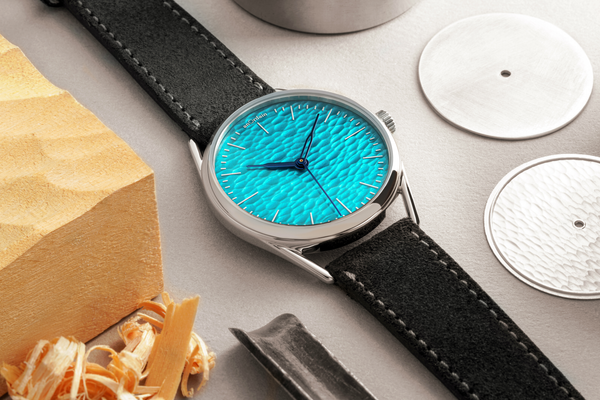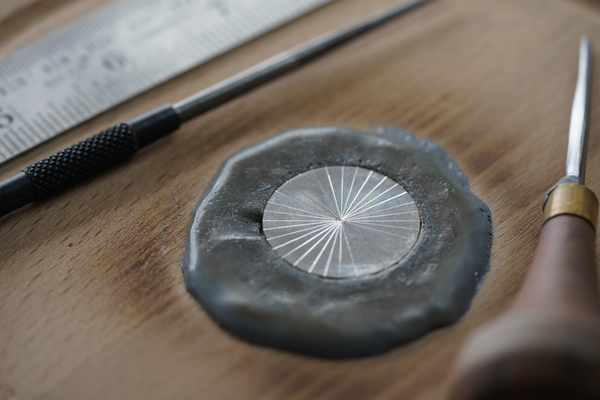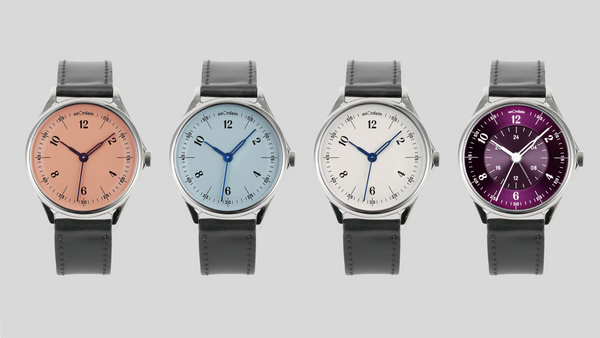100 Years of British Military Watches - Part 3
March 12, 2019
Cold war to the present day
1980 was a significant year for British military watches. For the first time in a quarter of a millennium, a British military issued watch was not powered by a mechanical wind up movement, but an entirely new electronic movement commonly known as Quartz. The specifications for this new type of British military watch were laid out in a Ministry of Defence document published in this year, called “Defence Standard 66-4”, the front cover of which is shown below.
Quartz movements offered a quantum leap in accuracy, being accurate to less than a second a day (e.g. +/- 0.1-0.5s/day), compared to mechanical watches which could often lose or gain up to 30s/day. Instead of using a balance wheel spring as an oscillator, to measure out portions of time, running at about 5 Hertz (18000 beats per hour), quartz watches use an electronically operated quartz crystal running at 32000 kilo Hertz. They are also much cheaper and easier to make than mechanical movements. The main downside, practically speaking, for quartz is the need to change the battery usually about every 2-5 years.

The first commercially available quartz watch released to the public was the Seiko Astron in 1969, so why did it take so long for this technically superior movement to make its way to the military?
As you may remember from Part I, antiquated pocket watches were still being issued in WWII. This illustrates a general reluctance in the military to abandon tried and tested reliable equipment, just because a new technology has emerged. Better to have something that you know is definitely going to work reliably for years, than something that might be a bit better technically, but whose long term reliability is unproven.
It could also be speculated that the requirement for a battery change every couple of years was seen as disadvantageous. This is likely the reason for the screw down battery hatch on the back of the first British military Quartz watches, that allowed for easy battery changes. In addition, possible concerns about failure due to nuclear bomb related Electro Magnetic Pulses (as mentioned in Part II) seems likely, this was the height of the Cold War after all.
The first Quartz watches issued by the British military are known by collectors as G10 “fatboys”, due to the chunky cases these came in. The relatively thick cases required to house the bulky early ESA Quartz movement inside. Supplied by CWC, they were first issued in 1980, with batches also produced in 1982, and were used by British forces in the Falklands War.

Due to the vastly superior accuracy provided by quartz watches, they also met the higher accuracy requirement for pilots and navigators watches, and so were also issued to RAF flight crew. These watches tended to have also have a date window, and were marked “6B” to denote RAF issue, and are usually referred to as “navigators”. This contrasts with earlier years when the RAF were generally issued with watches with much higher quality movements than land forces, due to the greater need for accuracy in air operations, emphasising the technical superiority of quartz.
Subsequent production of these watches from the mid 1980s onwards were slimmer in profile and sometimes called “medium fatboys”.


Finally, the later production models from the late 1980s onwards were positively slimline compared to the fatboys. Above is a shot of all three versions of the G10 stacked on top of each other to give an idea of thickness, oldest on top, latest on the bottom.

The CWC G10s are the most common British Military issued watch generally available today, with an estimated 200,000 being issued from 1980-2006. This does not however mean they were low quality, indeed quite the opposite. Sporting a solid stainless steel bead blasted case (to prevent light reflection), 5 atmospheres water resistance, a jewelled ETA quartz movement, and highly legible dial with Tritum lume, these are high quality and high specification watches. But sadly, it seems this was a reason that the MoD stopped purchasing them in bulk around 2006, as high quality means higher price.
In terms of price today these watches can be picked up fairly cheaply, although the early “fatboys” are becoming increasingly expensive. To illustrate the bizarre world of military watch prices, even though pretty much the only difference between a 1990 Royal Navy 0552 and the 1995 Royal Marine 0555 CWC G10 is a single digit engraved on the back, due to the rarity of 0555 ones, these can often go for several times the price of the more common 0552 ones.
CWC was not however the only producer of these watches, as you can see in the below photo of the much rarer Precista branded G10.

Having said in Part I that you generally can’t just walk into a shop and buy a military watch, CWC is the exception that proves the rule. If you are ever in London, I can highly recommend a visit to the Silvermans shop in Mile End, where you can purchase a variety of different CWC military watches.

First issued in 1999, the next General Service watch to be issued to the British Military was the Pulsar G10, with batches issued subsequently until at least 2014. Pulsar is a sub-brand of Seiko, and whilst it is an eminently functional watch, it has come into some criticism for being less robust than the CWC G10s. For example, these watches have mineral glass instead of acrylic crystals. Whilst acrylic scratches more easily than mineral glass, it doesn’t tend to shatter like glass does. The MoD did however pay significantly less for the Japanese/Chinese made Pulsar G10s, compared to the Swiss CWC G10s. Perhaps better not to tell this to Prince Harry who has been photographed wearing this watch both on “ops” in Afghanistan, and at formal Royal events!

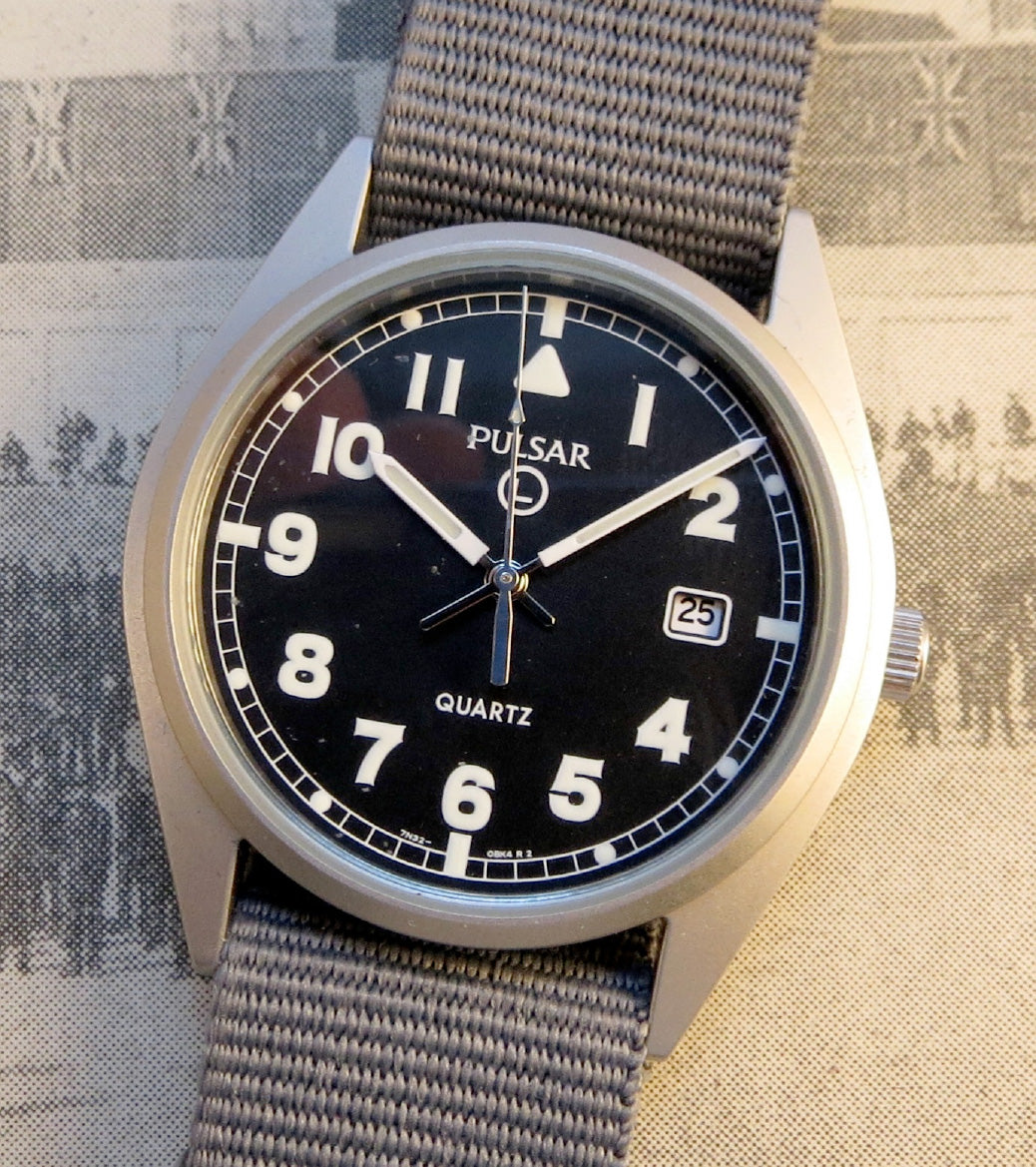

The Army was not alone however in receiving it’s first Quartz watch in the early 1980s. The RAF also began issuing a chronograph watch known as the Seiko “Gen 1” (short for first generation). Whereas previously the RAF and Royal Navy had only been issued with high quality mechanical chronographs made by the likes of Lemania and CWC, they were now in receipt of a quartz chronograph with the world’s first analogue quartz chronograph movement, the 7A28 movement made by Seiko.

Compared to most quartz movements today, which often have no jewels at all, and are largely made out of plastic components, this movement has 15 jewels, no plastic parts and can be repaired and regulated. In short, this is a Rolls Royce of quartz movements. It also has the ability to time events in 1/10s increments, a previously unheard-of ability in mechanical chronographs. In terms of what, or why you would want to time something to the nearest 0.1s, I honestly don’t know, but I do know that the sight of the 0.1s sub dial hand whizzing round, as if on fast forward, is super cool.
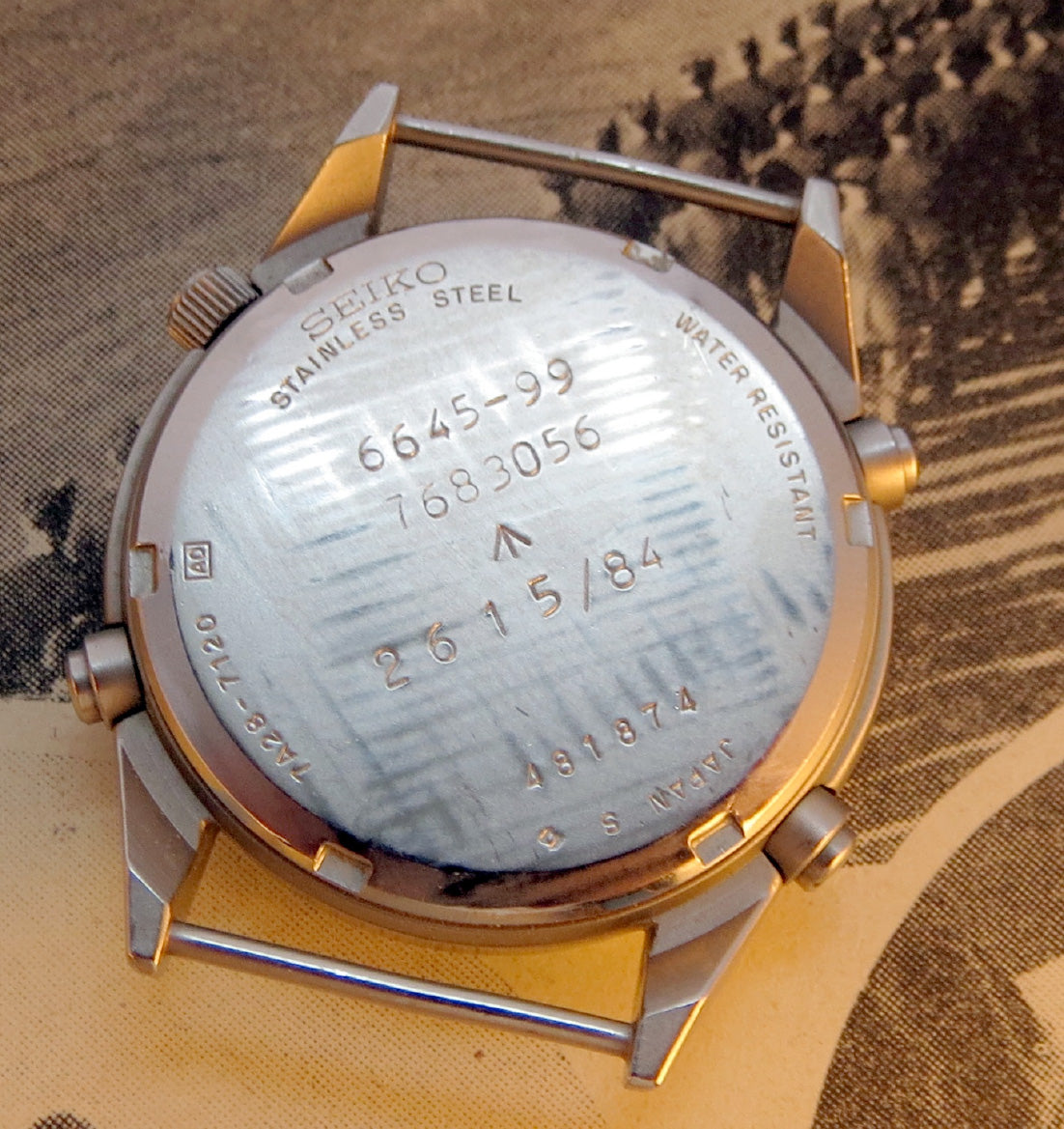
Following the Seiko “Gen 1” chronograph came, unsurprisingly enough, the Seiko “Gen 2” pictured below.

The Seiko “Gen 2”, whilst still an emminently competant watch, somehow lacked a bit of the horlogical magic of the “Gen 1”, with it’s lower grade non jewelled movement, and plastic parts. It also lacked the 1/10s counter, but could time events up to 60 minutes and displayed the 24hr time on a sub-dial at 9 o’clock, with the date at 4 o’clock.

Next up we have the Pulsar “Gen 1” chronograh pictured above. You will recall that Pulsar is a (usually cheaper) sub brand of Seiko, and there does seem to be a general trend in British military watches to value low cost over quality as time progresses. Most likely this reflected the lower sums spent on the military following the end of the Cold War. The Pulsar “Gen 1” is adequate, but is not without it’s issues. Firstly and most unusually, the central seconds hand is not a chronograph hand, but instead is the continuous seconds hand, as found in regular 3 hand quartz watches. Secondly, this watch was apparently the suject of a “notice to airmen” warning, due to the propensity of the crown to pop off and ricohet around the cock pit of your fast jet! Needless to say, the “Gen 1” was not in service for terribly long, before it was superceed by the “Gen 2”. However somewhat counter-intuitively, it seems likely that in the longer term, despite the difficulties described, the Gen 1 may become relatively more valuable due to the lower numbers issued.


With the Pulsar “Gen 2” it seems the lessons of the “Gen 1” had been learned, with a return of the central seconds hand as a chrono hand, and the 1/20s sub-dial. The Gen 2 also has a slightly unusual, but easy to read and intuitive 12 hr sub dial at 6, with two hands (one is over the other in the picture). This watch is rated for 100m water resistance, meaning it can reiably be used under water, unlike most other British military watches, except divers watches.

Having started Part I in 1914, we have now travelled through all 100 years of British military issued watches, and arrived in the present day. So what lies in the future for British military watches? Well it’s obviosuly difficult to predict the future, but, by understanding the changes in the past, we can suggest where things are heading.
Way back in 1914, essentially 19th century pocketwatches were being repackaged with soldered wire lugs to facilitate their use as wrist watches. These very early watches were neither particularly water resistant, accurate or legible at night. However, as we have seen, a gradual evolution in the use of better materials (such as moving from silver, to plated brass to stainless steel for cases), and technology (such as the move from mechanical to quartz), has allowed the production of ever more robust and feature packed military watches, culminating in the Pulsar “Gen 2” of today. Looking back, we really have come a long way from the antiquated trench watches powered by a spring, wound everyday, to the quartz chronograph powered by a battery lasting for years, and running a complex, highly accurate and reliable integrated electronic circuit capable of timing events from 0.1s to 12hrs.
In the future we can expect ever more functions from military watches, such that the first military smart watch does not seem like science fiction anymore. With the ever-increasing importance of digital communications and data management on today’s battlefield, it seems increasingly likely that something akin to a smart watch will be issued to military personnel in the near future. Such equipment could for example allow troops to control weapons systems, communicate with each other, view live surveillance footage from drones, access mapping data, or feedback health data to HQ.
Before I start talking about jet packs and the like, it also seems likely that there will remain a place for the simple but reliable time only watch. Sadly, the glory days of the mechanical military watch are over, and these days you most commonly see military personnel wearing near indestructible and highly functional watches such as the Casio G-Shock. And who can blame them, these watches are cheap, reliable and highly functional. However, given the fact that military issued watches have been an indispensable item of kit for the past 100 years, it seems likely that some form of military issued watch will be around for the foreseeable future.
